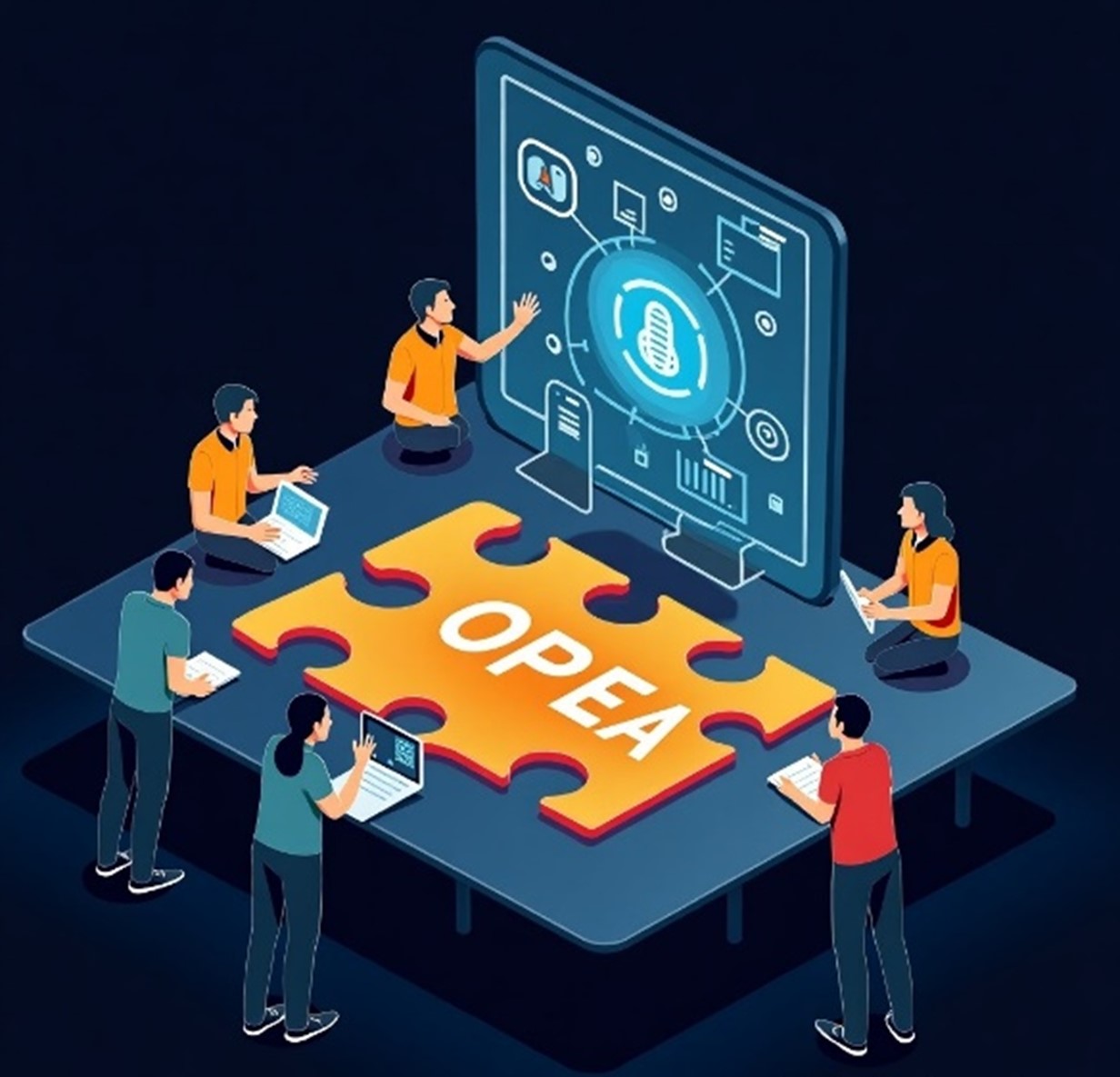
Look, we’ve all been there—cobbling together enterprise AI solutions from mismatched parts and praying they scale. It’s a nightmare. That’s exactly why the Open Platform for Enterprise AI (OPEA) was created. OPEA is building the foundation we all wish existed, and the project could use another pair of hands. Yours, specifically.
OPEA addresses the issues caused by fragmented tools, complex integrations, and scalability challenges head-on by offering a modular, open source framework tailored for building and deploying enterprise AI solutions. Backed by industry leaders like Intel, Hugging Face, Red Hat, DataStax, Docker, LlamaIndex and many more, OPEA’s mission is to accelerate the adoption of generative AI (GenAI) in the enterprise by providing:
- Reference architectures and blueprints for building robust, scalable, and interoperable AI applications.
- Open standards and APIs for seamless integration across vendors, clouds, and platforms.
- Best practices, tools, and validation frameworks to help enterprises go from prototype to production faster, safer, and with fewer headaches.
Since its launch a year ago, OPEA has proven its versatility across multiple applications, including Graph RAG and ChatQnA‘s RAG implementation, AgentQnA, CodeGen and DocSum assistants, and the multimodal VisualQnA.
Why Contribute to OPEA?
OPEA is built on a powerful open source foundation using Docker and Kubernetes, and it runs seamlessly across multiple providers, including Intel® Tiber™ AI Cloud, Microsoft Azure*, and Amazon Web Services (AWS)*. Its modular architecture enables the development of robust, multi-provider generative AI solutions.
By contributing, you help shape the future of enterprise AI, ensuring it’s accessible, efficient, and impactful for all. Plus, it’s a fantastic opportunity to collaborate with industry leaders, grow your technical skills, and increase the visibility and adoption of your software or hardware offering within the ecosystem—for example, by adding a new functionality or improving the guardrails. If you’re new to OPEA, this brief introduction can be a great place to start.
Ways to Get Involved
As an open source initiative, OPEA thrives on community contributions. Whether you’re a DevOps engineer, scientist, or AI enthusiast, there are plenty of ways to contribute to OPEA and make a meaningful impact. Here are just a few:
Enhance documentation: Clear and comprehensive documentation is vital. You can contribute by:
- Clarifying existing content and readme files
- Adding examples or tutorials.
Start by exploring the OPEA Docs Repository and reviewing the CONTRIBUTING.md for guidelines.
Develop GenAI components: If you’re into coding, consider contributing to the GenAIComps Repository. Here, you can:
- Build new microservices
- Improve existing components
- Optimize performance and scalability
Each component should follow the standardized folder structure laid out in the OPEA contribution guidelines.
Ensure your component includes comprehensive documentation (README.md) detailing the microservice description, build and start commands, and example usage. Your contributions will help create comprehensive solutions for enterprise AI applications.
Share use cases and examples: Real-world applications showcase OPEA’s capabilities. By sharing your projects or use cases, you:
- Demonstrate practical implementations
- Provide learning resources for others
- Highlight OPEA’s versatility
- Share your success and insights with the community
Check out the GenAIExamples Repository to see existing examples and contribute your own.
Each example should include a file that contains the main application definition using microservices, megaservices, and gateways. For the folder structure of Docker, Kubernetes, and test files, follow the ChatQnA example on the OPEA contribution guidelines.
Improve infrastructure: For those interested in DevOps or infrastructure based on Kubernetes, the GenAIInfra Repository is the place to be. By contributing, you can:
- Enhance containerization processes
- Improve cloud native deployments
- Ensure scalability and reliability
Your work here ensures that OPEA remains robust and production ready.
Getting Started
Contributing to OPEA is your opportunity to help shape the future of enterprise technology while collaborating with a passionate community of innovators. Here are a few guidelines for getting started.
Explore the repositories: Visit the OPEA GitHub page to familiarize yourself with the available projects.
Read the contribution guidelines: Each repository has a CONTRIBUTING.md file outlining how to contribute effectively.
Fork the repository you wish to contribute to and clone it to your local machine. Create a new branch for your modifications. Develop your feature or fix, and ensure it passes all tests. And finally, push your branch to your forked repository and submit a pull request to the original repository. For significant changes or new components, submit a Request for Comments (RFC) to gather community feedback.
Join the Community: Engage with other contributors, ask questions, and share. Here are a few ways to join the conversation.
- Subscribe to the mailing list, and follow OPEA on X and LinkedIn.
- Attend or organize local OPEA meetups, hackathons, or webinars.
- Blog, tweet, or speak about OPEA to help grow the community.
Start Small: Begin with minor contributions to build confidence and understanding.
Your unique skills and perspectives are invaluable. So, dive in, collaborate, and make an impact! If you found this article valuable, please consider sharing it with your network.
Acknowledgments
The author thanks Jack Erickson, Eze Lanza, and Nikki McDonald for providing feedback on an earlier draft of this work.
* Other names and brands may be claimed as the property of others.